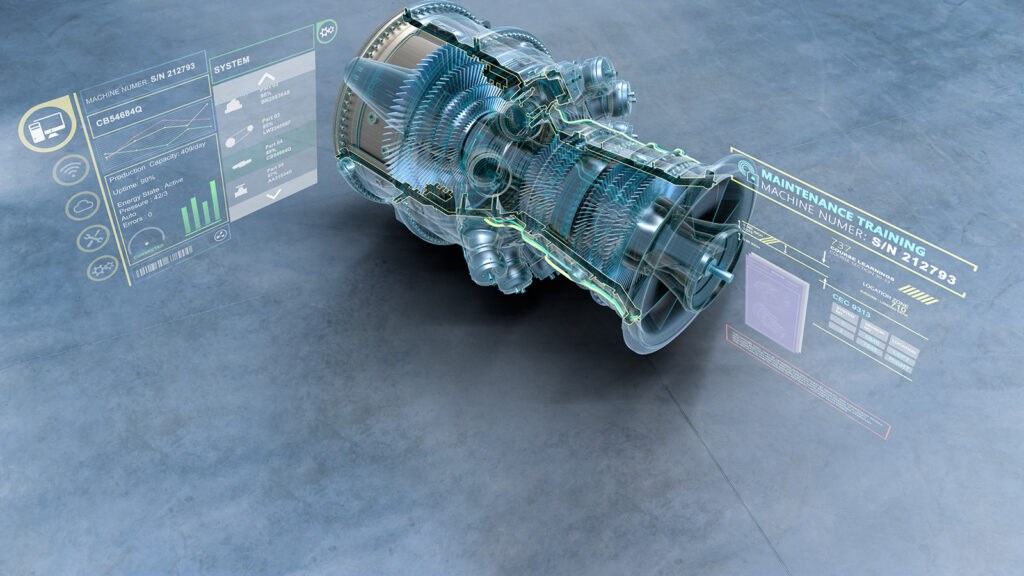In this six-part series, we answer the most pressing questions about establishing AR in product development and scaling it from pilot to multiple use cases. You will get practical tips to get you started.
How far can Augmented Reality go?
You are probably familiar with the Marvel superhero Tony Stark (aka “Iron Man”). The billionaire is a regular guy, but his red and gold armor contains so much advanced technology that he outperforms even his “superhuman” counterparts.
One of his special abilities: The clever engineer turns the world into a computer. He projects 3D holograms into space that help him and his colleagues develop new anti-villain technologies. Instead of using a mouse, keyboard or smartphone, he controls all interfaces with his voice or with hand, eye, and head movements. This is much faster and more intuitive than a standard computer interface.
Of course, we can’t make your employees fly (yet) or give them muscles of steel. But we can give them Starks’ advanced computer interface: high-end Augmented Reality via immersive 3D holograms.
These immersive AR applications go far beyond simple remote maintenance or marketing applications. With advanced AR glasses such as Microsoft’s HoloLens 2 and compatible real-time 3D software, employees can see and collaborate on digital twins or full-scale prototypes in the physical world.

Engineers, designers, and product developers can interact with a digital prototype just as naturally as with a physical one. They view it from different angles with simple head movements or approach individual components.
They operate and modify the prototype naturally with their own hands. For example, they perform assembly tests by picking up 3D CAD components visualized in AR with their hands and assembling them on the prototype – even as a team. In this way, the assembly process of components can be tested and improved without a physical test setup.
Gesture control with immersive AR is more intuitive and faster than traditional computer interfaces. The direct and realistic interaction also enables a better understanding of product functionality, design, and usability. This in turn provides the basis for more informed decision-making in product development.
Because immersive AR technology is based on real space, it can precisely overlay 3D holograms on physical objects in real time. Immersive AR thus brings the digital twin into the real world.
This results in several unprecedented application scenarios. Like Iron Man in his super-suit, workers can use digital X-ray vision to look inside the machine and observe material and data flows to better understand processes and identify opportunities for optimization.

By displaying real-time information, instructions, and visual cues on an AR device, many jobs can be performed more reliably and accurately. Precise measurements or interactions with the device can be recorded and stored for later reference and follow-up actions. This minimizes the learning curve, for example, when training new operators on a machine right on the job.
In addition, AR as a visual aid enables faster and more intuitive fault diagnosis and correction, reducing machine downtime, while overlaying safety instructions and warnings reduces the risk of accidents.
Another benefit of immersive AR is the ability to measure the environment in real time. This 3D measurement data can be fed back into the data source to make future digital prototyping processes even more efficient.
Digital continuity is the foundation for the successful implementation of digital business processes. AR applications must also adhere to this principle by ensuring that the holographic 3D models match the source data down to the smallest detail. Otherwise, there is a risk of high error rates. With XR streaming, the original data is displayed on the XR glasses in unaltered quality from a central, secure location, maintaining digital continuity.
Action Points:
- Think Iron Man instead of remote maintenance, and immersive instead of simple AR visualization. Learn about immersive AR for 3D content to understand the full potential of Augmented Reality in product development.
- The foundation of a successful AR implementation is digital continuity: don’t compromise on data.
